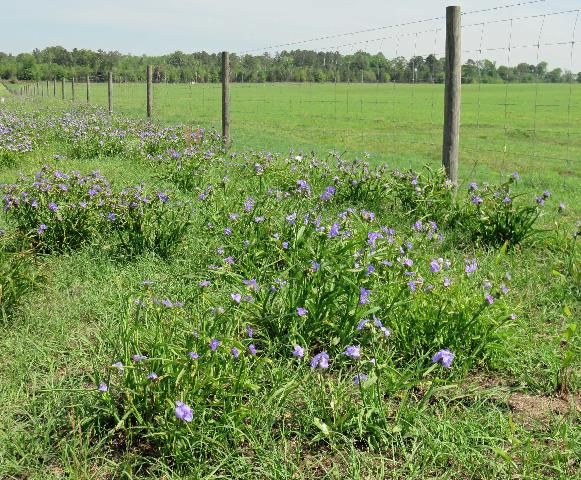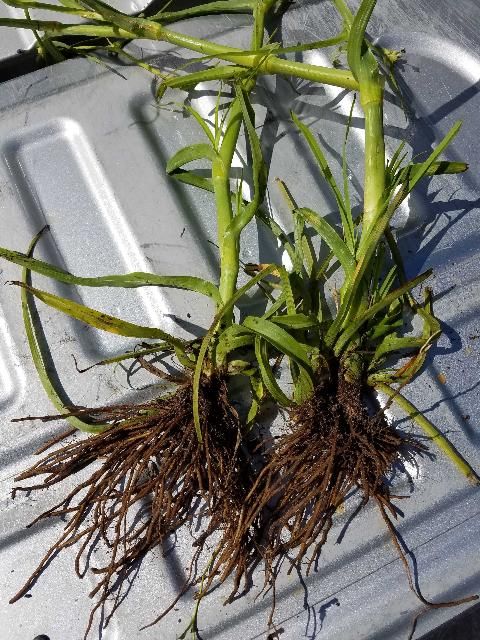
Credit: Doug Mayo, UF/IFAS Extension Jackson County
Spiderwort (Tradescantia ohiensis Raf.) is a native perennial species found throughout the eastern half of the US. It has a large, fleshy stem with long and grass-like leaves (Figure 2). The flowers have three petals that occur in dense clusters. These petals are purple to pink in color and approximately 0.5 inches wide and 0.75 inches long (Figure 3). Spiderwort emerges in early spring, then flowers and produces seed through midsummer.

Credit: Pratap Devkota, UF/IFAS

Credit: Mike Durham, UF/IFAS
Spiderwort is problematic in grazing systems because it is largely avoided by cattle. The large, fleshy stem also makes this plant an issue in hay production. When cut with a grass forage, spiderwort does not dry at the same rate as grass and can cause spoilage when the hay is baled.
Control
Durham and Ferrell conducted experiments in High Springs, Florida, to compare the activity of commonly used pasture herbicides on fully emerged and flowering spiderwort. All herbicides were applied with crop oil concentrate (COC) at 1% v/v.
Spiderwort response to all herbicides was similar at 1 week after treatment (WAT). Control was less than 50% (Table 1). Triclopyr resulted in 86% control, but all other herbicides had very little impact at 4 WAT. Triclopyr exhibited excellent control (95%) at 8 WAT, while the other treatments remained at 50% or less. The efficacy of triclopyr against spiderwort began to decline shortly after 8 WAT (data not shown), and spiderwort re-established in all plots.

Credit: Mike Durham, UF/IFAS
Conclusion
No single herbicide application was found to fully control spiderwort. The greatest level of control was reached when triclopyr was applied at 32 fl oz/acre. Canopy growth did not recommence in the triclopyr plots for another 4 to 6 weeks after the initial burndown. However, the majority of the spiderwort plants did eventually regrow in the triclopyr plots. Therefore, it is important to keep in mind that the results of triclopyr application may be temporary. With this timeline in mind, producers should treat infested fields at least a month prior to cutting hay. Fortunately, producers should have at least a month after burndown to cut and bale their hay without experiencing any spiderwort-related issues. It will take multiple cycles of regrowth burndown to reduce the population in a field. When feasible, hand removal is still the most effective control method.